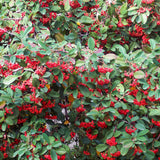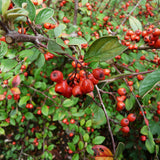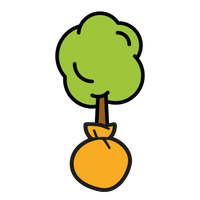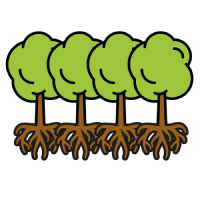When should I plant Franchet Cotoneaster hedging?
The best time to plant your Franchet Cotoneaster is from late autumn through to late winter.
How far apart do you plant Franchet Cotoneaster plants?
Pot grown plants can range from 3-5 plants per metre, but this does depend on the maturity of the roots. If you are planting at a higher density, you will need to plant in a staggered or zig-zag row.̴Ì?
How to plant Franchet Cotoneaster:
Begin by digging a hole that is twice as wide and deep as the plant's root ball. Save the soil to use as backfill, and remove any weeds or rocks from the backfill soil.
Try to break up any densely matted roots before the place the plant into the hole. Franchet Cotoneaster should be planted at ground level, too.
Once planted, backfill the hole with excess soil and amend with peat moss or compost. After this, thoroughly water the plant (and continue to water around 2/3 times per week for the first year after planting).̴Ì?
Spread a decent layer of mulch around the plants to help suppress any weeds - this will also help the plant to survive in very cold conditions,̴Ì?with it helping to retain soil temperature and moisture.












